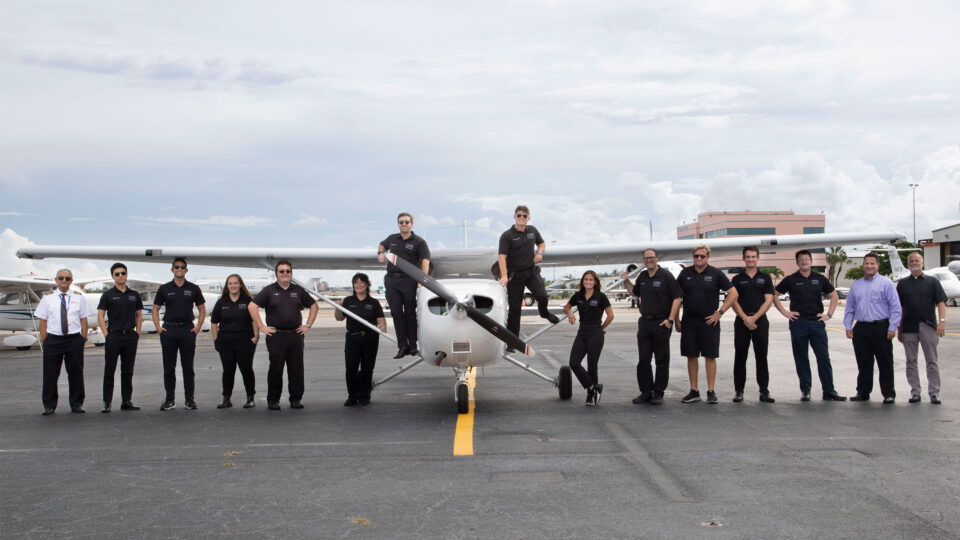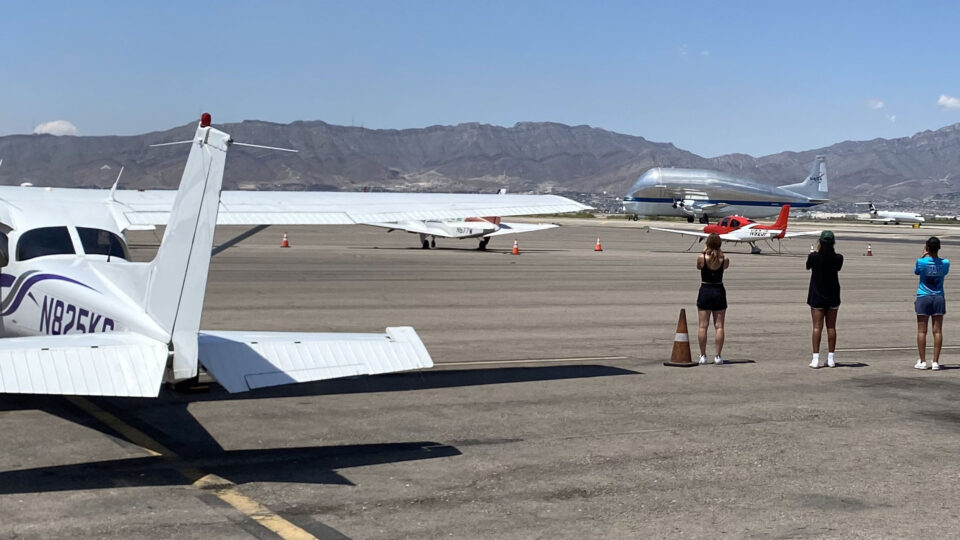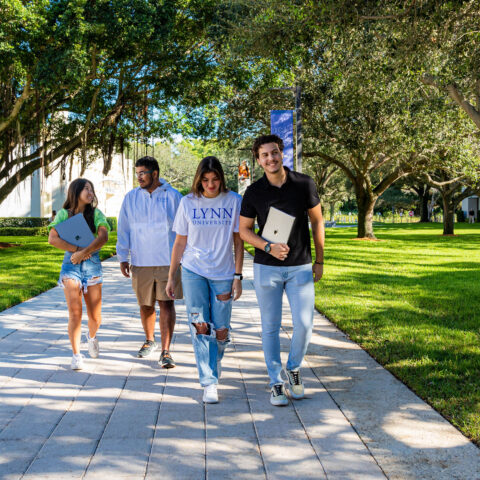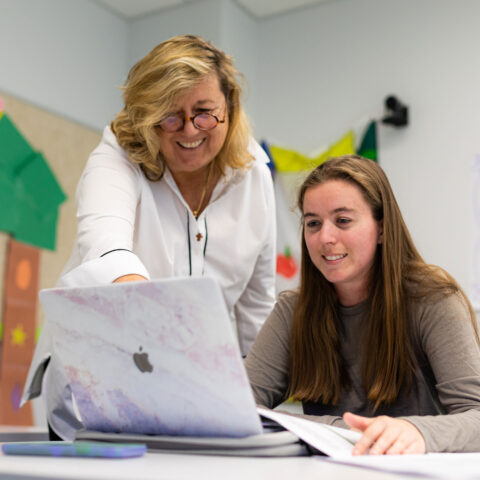From Bakersfield, California to Boca Raton, Florida. A team of passionate flight instructors flew a cross-country trip over the United States to deliver "The Twins"—a pair of Cessna 172S airplanes to add to Lynn University’s Burton D. Morgan College of Aeronautics fleet. The department welcomed "Suzie," a Cessna 172S from North Carolina, a few months before the cross-country trip. The university acquired the three aircraft to meet demand for its rapidly growing College of Aeronautics, which saw record first-year enrollment, with a 26% increase over the 2022–23 academic year. The expanded fleet allows more student pilots to develop the knowledge and skills necessary to become aerospace professionals.
The A team
Flight instructors Blaise DaCosta, Jensen Kervern, Marisa Vietti, and Director of Maintenance Nathan Rogers were chosen to retrieve The Twins from California. The pilots knew that flying the small planes cross-country could present many challenges, including unpredictable weather, flight fatigue, aircraft maintenance and cruising over formidable mountain ranges.
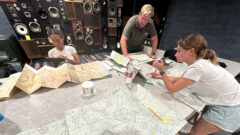

Every pilot brought their flare of flight training experience and unique skill set to complement the team and help get the planes back home to Lynn safely. But the journey was not without its share of unexpected events …
Day 1
Beginning in Bakersfield, California, the team took command of The Twins by splitting into two teams. Throughout the journey, the pilots switched between teammates and alternated seating positions in the cockpit. "This prevented us from getting complacent," said Kervern. "If you're flying with the same person all the time, and you are repeating the same tasks frequently, you begin to expect what you think is going to happen next, which is when accidents can happen."
"We also did it so we wouldn't get bored of each other," said DaCosta with a smile.
After taking off from Bakersfield, The Twins flew for four and a half hours through vast mountain ranges into Maricopa, Arizona, where the pilots encountered a 50-foot-wide runway in Ak-Chin Regional Airport. "For context, the runway in Boca Airport is 150 feet wide. We were landing on a sidewalk," said DaCosta.
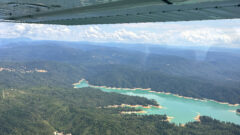
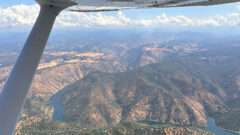
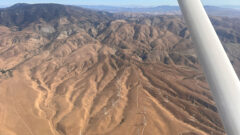
The wind was also pushing powerful currents at the time of landing, so the team worked on their crosswind landing techniques. After refueling, The Twins headed to Tucson, Arizona, where the team experienced the presence of iconic F-16s taking off.
Day 2
After overnighting in Tucson, the pilots navigated The Twins through complex mountain ranges, forcing the planes to decrease speed. The planes swiftly dipped into the valley of El Paso, Texas, where the Mexican border seamlessly blends into the horizon from the skies. In addition, the team felt like they experienced a UFO sighting when they had the rare opportunity to see a mammoth Super Guppy. The silver wide-bodied NASA aircraft can carry items that cannot fit inside other cargo aircraft.
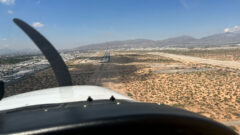
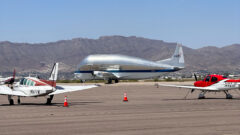
The team had a quick turnaround in El Paso due to rising temperatures and increased altitude, which had the potential to decrease engine performance. Once the team moved out of El Paso, The Twins—cruising about 15 to 20 miles apart—headed toward Abilene, Texas.
"We were flying about four and a half hours per day at this point and putting our skills to the test," said DaCosta. "We were climbing to cooler temperatures to deal with less turbulence, leveraging wind conditions whenever possible, and providing each other feedback over the radio on flying conditions to maximize efficiency."
After the team crossed the Guadalupe Mountains, the coast was clear of unfamiliar mountain ranges as they landed in Abilene for an overnight stay. With flat landscapes for the remainder of the trip, the team was confident in their ability to speed back home to Boca without complications. The weather had different plans …
Day 3
During the last leg of the trip, the team flew from Abilene to Alexandria, Louisiana, to refuel. Afterward, The Twins were off to Andalusia, Alabama. At this point, a vital decision had to be made due to the looming outer bands of Hurricane Idalia making its way to Florida.
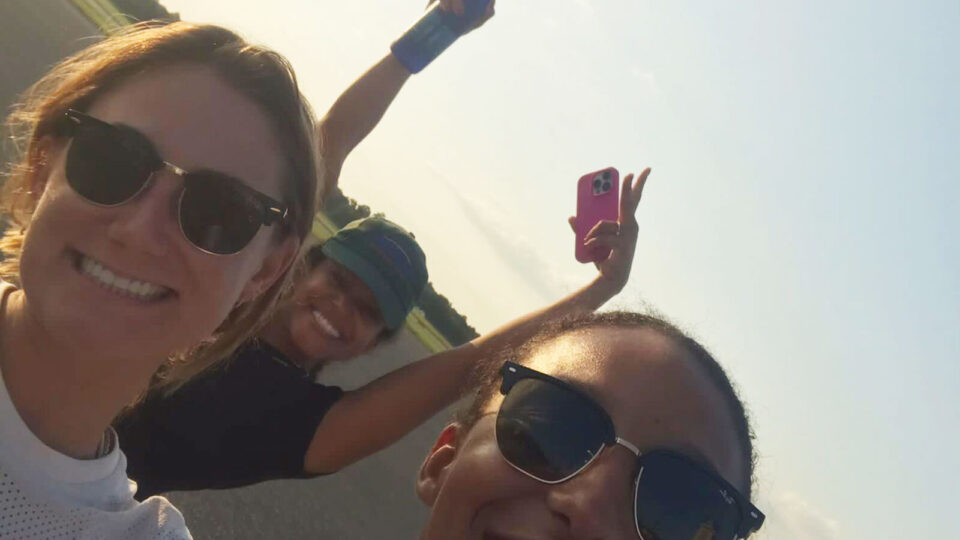
The team could either be stuck in the panhandle or push through if weather conditions were favorable in Alabama. Thunderstorms were expected that afternoon, fortunately, the team was greeted with decent weather when they landed in Andalusia. The team decided to power home and skew the thunderstorms of Hurricane Idalia from Andalusia, Alabama, to Ocala, Florida, and back to home base in Boca Raton.
Day 3 started at 6 a.m. The Twins landed home by 9 p.m.
"We did half of the trip that last day," said Kervern. "It was overwhelmingly difficult, but The Twins were finally home."
Just rolling with it
Over the three days, the team flew coast to coast for 2,000 miles and approximately 30 hours of flight time. They overcame flight fatigue during their four-hour flight stretches, hot temperatures, strong-arming a heavy amount of turbulence during their time in the mountains, unexpected weather conditions and much more.
"We over-planned for this trip. It was intimidating because sometimes you are flying and conditions are better or worse than you predicted," said DaCosta. "So you have to roll with the punches and push through. Understanding this was the hardest but most rewarding lesson as a pilot."
Staying busy
As the College of Aeronautics continues to grow—with almost 120 total Flying Knights, ranging from new student pilots with zero experience to seasoned pilots working on their FAA Commercial and Certified Flight Instructor certificates—the future looks bright and busy for our three new members of the Lynn fleet.
The Twins have basic aircraft instrumentation and are now used for all flight training needs, primarily for private pilot and commercial flight instruction.
Suzie sports an autopilot with advanced display and navigation systems, making her exceptionally well-suited to train instrument and commercial students.
For current Flying Knights and prospective students, DaCosta offered the following advice:
"Whatever we teach you may not apply to you in Boca Raton, but it could apply to you elsewhere. Think of the big picture. Strip away any notions of tunnel vision and always be prepared. Have a backup plan to the backup plan."
Discover more at lynn.edu/aviation.
